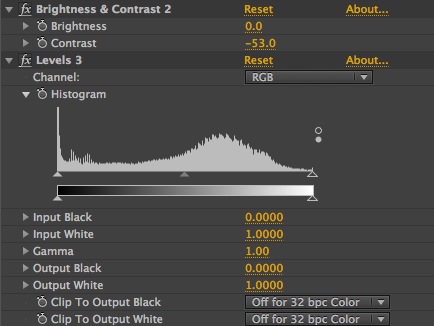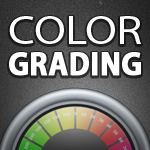
8 Bit Color vs. 32 Bit Color in Video Color Grading
Bit depth has a major effect on color correction adjustments. Know the difference between 8 Bit and 32 Bit!
The default bit depth for After Effects is 8 bit, which works fine for most projects and renders fast. You can also choose 16 or 32 bit (float). If you’re careful and intentional with your corrections, 8 bit will work fine, but with major adjustments and re-adjustments – or multiple layers/instances of color correction effects – you can start to see some nasty results.
Here’s a starter image. I applied a levels effect so that you can see the histogram:
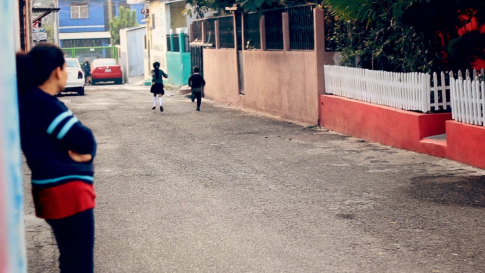
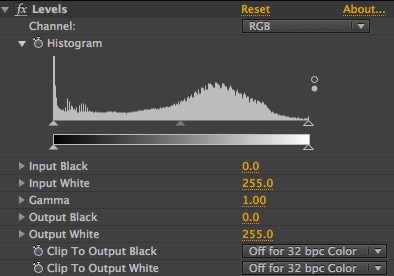
Now I’ll apply a color corrector (my favorite freebie – Colorista Free) and crunch the image by lowering the blacks and raising the whites:
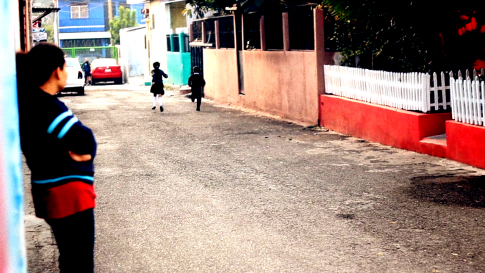
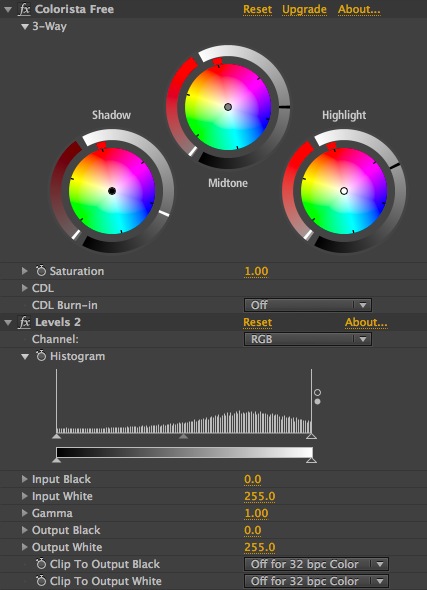
Notice how the histogram I applied below it starts to get little spaces between the lines. That’s because of the limitations of 8 bit color. Under normal circumstances it wouldn’t be a huge deal, since you don’t need that extra information if that’s your final look. But what happens if I apply another instance of Colorista and try to pull the image back to it’s original contrast?
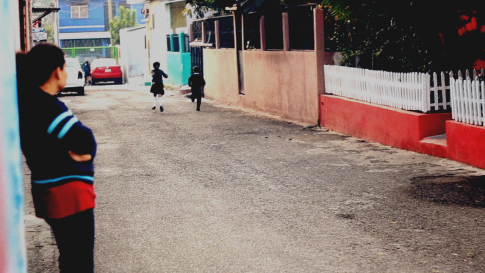
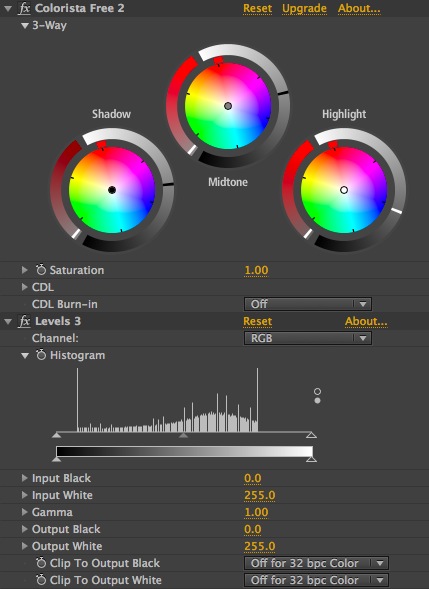
The histogram is completely clipped. The blacks and whites are milky, and it just looks nasty. Now, this is an extreme example, but you get the point. 8 bit color has major limitations.
Now I’m only going to do one thing. Change this:
![]()
to this (option/alt – click):
Look at the result. Way better, right?
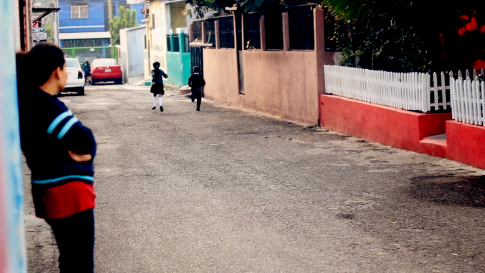
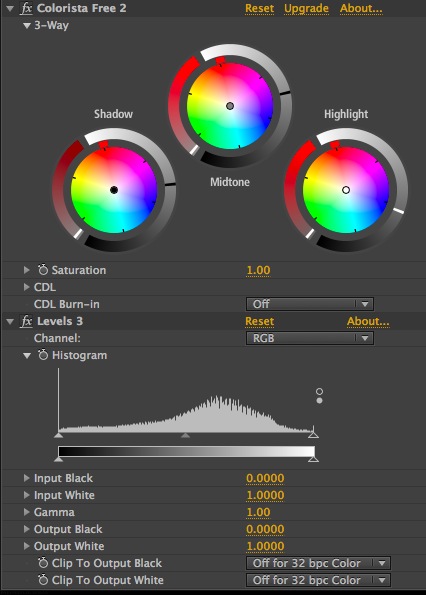
I can even adjust the second instance of Colorista to correct the image almost back to start, and I have all of the original color information to play with:
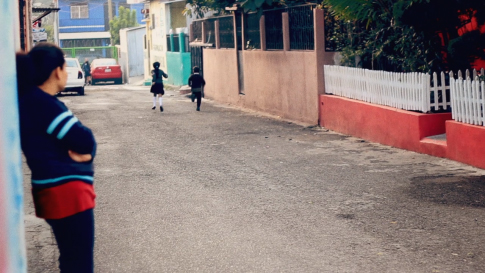
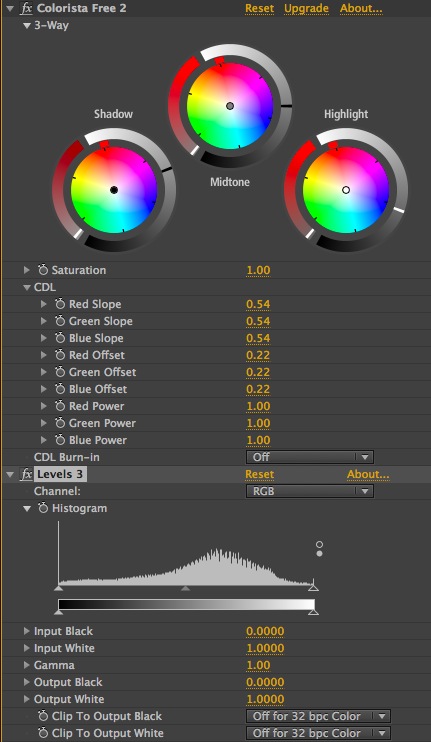
Just to show you that this isn’t due to the fact that Colorista is a 3rd party plugin, here’s the same process with After Effects’ built-in Brightness and Contrast plugin. First, up the contrast:
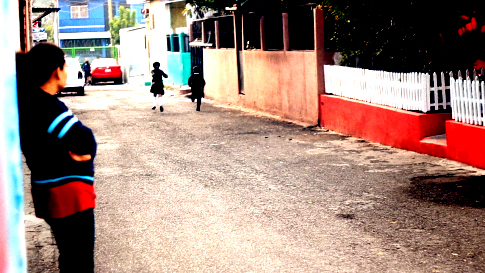
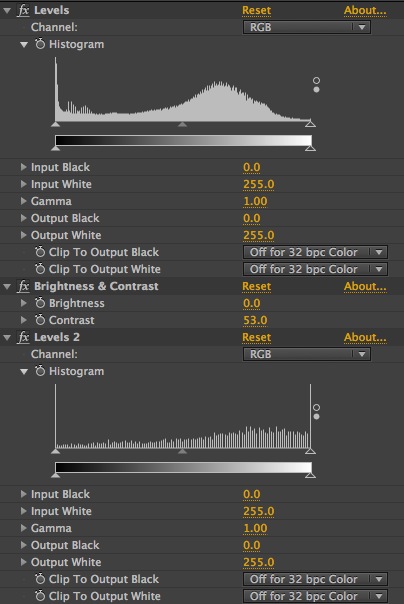
Lower the contrast:
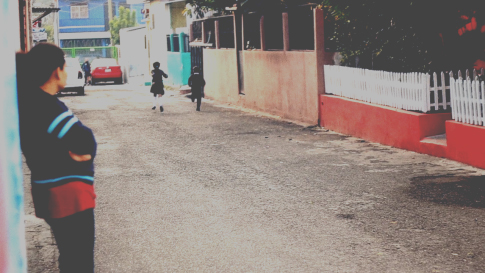
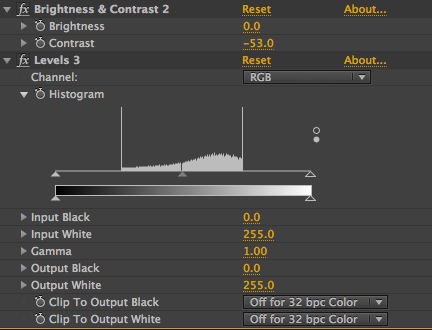
Change to 32 bit mode:
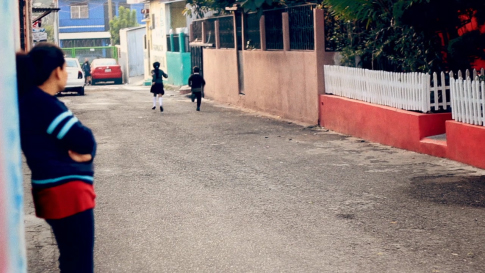
Switching to 32 bit color can have an impact on your render times, so keep that in mind when deciding if you really need it on or not. If you can do all of your color grading with one effect, or if you’re doing more gentle adjustment, 8 bit could be just fine. But if you’re relly doing a major push/pull or using several instances of color effects, 32 bit may be your best bet.


